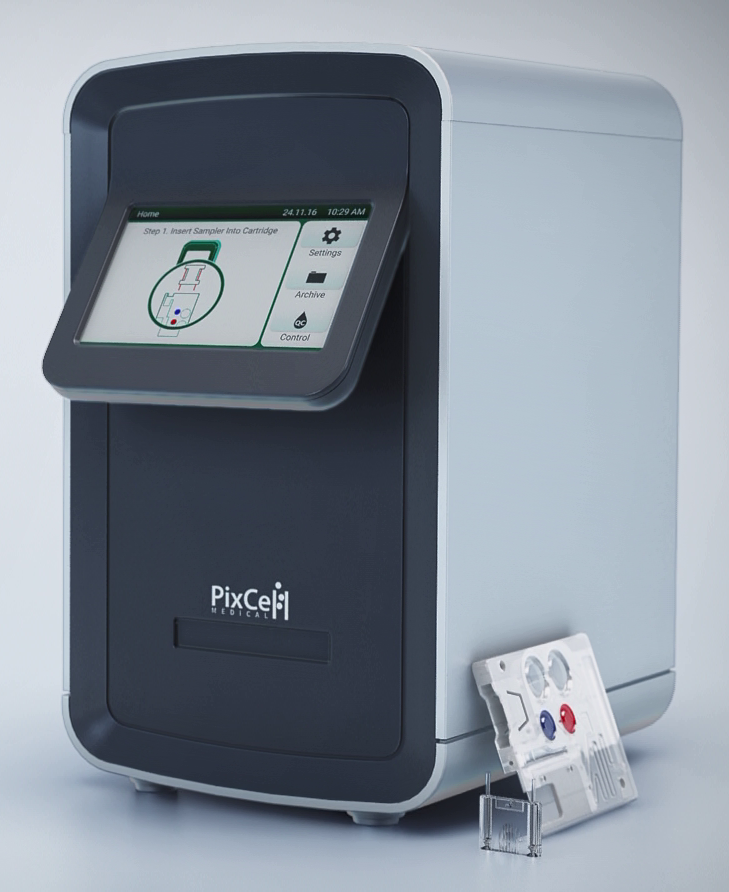From GP appointments via telephone to remote patient monitoring technologies: it would be hard to miss the shift towards remote healthcare. Over the past two years, the Covid-19 pandemic has catalysed a trend that might otherwise have developed far more gradually.
According to McKinsey, telehealth utilisation spiked at the start of the pandemic, before stabilising. The ‘new normal’, however, was a significant departure from what came before. The consultancy reported that, by February 2021, the levels of office and outpatient visits conducted virtually were 38 times higher than prepandemic.
This shift is affecting diagnostics too, particularly when it comes to patients with chronic conditions who need frequent testing. For instance, cancer patients may need repeated complete blood count (CBC) tests to see how their condition has progressed and how their body is responding to treatment.
Prepandemic, this would have involved visiting their doctor. However, given that many cancer patients are immunocompromised, this simply hasn’t been feasible for much of the past two years. It has stirred demand for at-home testing solutions, which patients can perform themselves without any risk of catching Covid-19.
“Covid-19 has highlighted the need for decentralised healthcare services, as hospital systems have been overburdened to the point of collapse during the pandemic,” says Dr Avishay Bransky, co-founder and CEO of PixCell Medical. “One major backlog is in delivering diagnostic results to physicians to enable them to make informed clinical decisions quickly. Rapid POC diagnostics is changing the way blood tests are managed and performed.”
A portable platform technology
PixCell Medical has developed precisely such a technology. Its HemoScreen device is a miniaturised diagnostic platform for performing the CBC test at the point of care. It enables patients to perform lab-accurate diagnostics at home, receiving their results within five minutes.
“The user collects a blood sample through a finger-prick – one drop of blood is all that’s needed,” says Bransky. “The blood is collected within our ‘lab-on-a-cartridge’, and is placed into the HemoScreen analyser. The technology uses AI and other tools to deliver lab-accurate results.”
Whereas standard hematology analysers are large and complex, suitable only for use by trained technicians, HemoScreen is lightweight and portable, and can be used by anyone. Since being approved by the FDA in 2018 – and especially since the start of the pandemic – it has been deployed across the healthcare continuum.

“It has been used for triaging those in the emergency rooms, assessing oncology patients’ readiness for treatment at infusion centers, in operating rooms to determine if a blood transfusion is needed, and in rural settings where healthcare access is limited,” says Bransky. “Within primary care, HemoScreen can be used in a pediatric setting, reducing the anxiety of needles and blood tests for children and parents.”
Since this is a platform technology, PixCell Medical is now developing additional tests that would run on the same analyser. These include a C-reactive protein and procalcitonin test, infection markers that would inform clinical decision-making.
An evolution of laboratory diagnostics
HemoScreen is far from the only POC diagnostic device on the market. Medtech company Athelas is highly active in this space, having launched Athelas One in 2017. This device is used for monitoring the white blood cell count of patients on the antipsychotic drug clozapine. Since its release, the company has launched a full suite of remote patient monitoring devices.
Another technology, currently in the prototype stage, is OmniVerita M, a POC diagnostic platform in development by Biological Dynamics and designed for use with a normal smartphone. It can be applied across numerous indications.
“Within the oncology space, we are developing both general and high-risk screening tests,” says Dr Paul Billings, advisor at Biological Dynamics. “For infectious disease, there is a critical need to test potentially exposed individuals quickly to manage outbreaks and triage potentially deadly cases. There are other areas, such as traumatic brain injury, where being able to deploy a test rapidly may have a profound and positive long-term impact on patients.”
He envisages the platform being used at doctors’ offices, or even at home. Within lower- income countries, technology could enable aid organisations and local communities to perform testing where needed.
“The reason we can imagine our products serving such disparate settings is because of the ubiquity of smartphones, which we are leveraging to perform many of the functions previously only available on lab benchtop instrumentation,” he says. “Unlike common strip-based tests, the integration of smartphone technology allows rapid transmission of test results into a patient’s healthcare record.”
This platform he says, is more an evolution of existing laboratory diagnostics than a deviation from them. The company will initially launch tests using its technology in a lab setting, before migrating them to a commercial POC system.
“Many of the components of our tests are similar to those of existing lab methods and assays,” he says. “For example, we use dyes found in other labs to stain DNA to determine its abundance in a sample. The difference with our test is that instead of relying on lab equipment, we have been able to reduce the form factor to a small device, powered by a cell phone battery.”
On top of that, the smartphone can replace the laboratory computer; the phone’s network access can replace the networks labs use for sending data; and the phone’s camera can be used to replace a lab microscope.
While Biological Dynamics has not yet begun the regulatory and reimbursement processes for its system, it has received breakthrough device designation from the FDA for one of the tests it is developing. Its near-term focus is creating tests that can screen for cancer.
Safeguards in place
These kinds of technologies could hold promise across many branches of healthcare. According to GlobalData, there are currently 65 point-of-care tests in active development, including 15 in the infectious diseases space and seven in oncology.
However, as the field matures, questions may arise around user error and patient privacy. If patients are diagnosing themselves from their own home, how can we be sure their conclusions are accurate? And when you’re dealing with connected devices of this kind, how can you ensure confidentiality?
In the case of OmniVerita M, the phone camera function is explicitly designed to take the stress off the patient. It relieves them of the burden of playing doctor and interpreting the test correctly.
“One advantage of using a smartphone is the capability to deliver more advanced tests to a broader group of patients,” says Billings. “We can take advantage of the phone’s camera to ‘picture’ the analytes of an assay, then send that picture to the cloud where the results can be analysed objectively. This decentralised format of diagnostics is a trend we are monitoring closely.”
He adds that additional test controls will be put into place, to confirm the test has been performed in line with system specifications. Patient privacy, meanwhile, will be protected on a use-case specific basis, in line with the applicable standards.
HemoScreen, meanwhile, uses dozens of internal controls to make sure erroneous results are not generated. For instance, if the user doesn’t collect the sample properly, the HemoScreen will detect the problem and display an appropriate message.
“The HemoScreen does not store any personal information. The identification of a specific sample can only be done at the hospital’s laboratory information management system,” adds Bransky.
While these kinds of systems were in development before the pandemic, the events of the last two years have shown us exactly why they’re necessary. We shouldn’t expect laboratories to disappear overnight – but at least in some cases, it may not be too long before comparable diagnostics are available in our homes.




